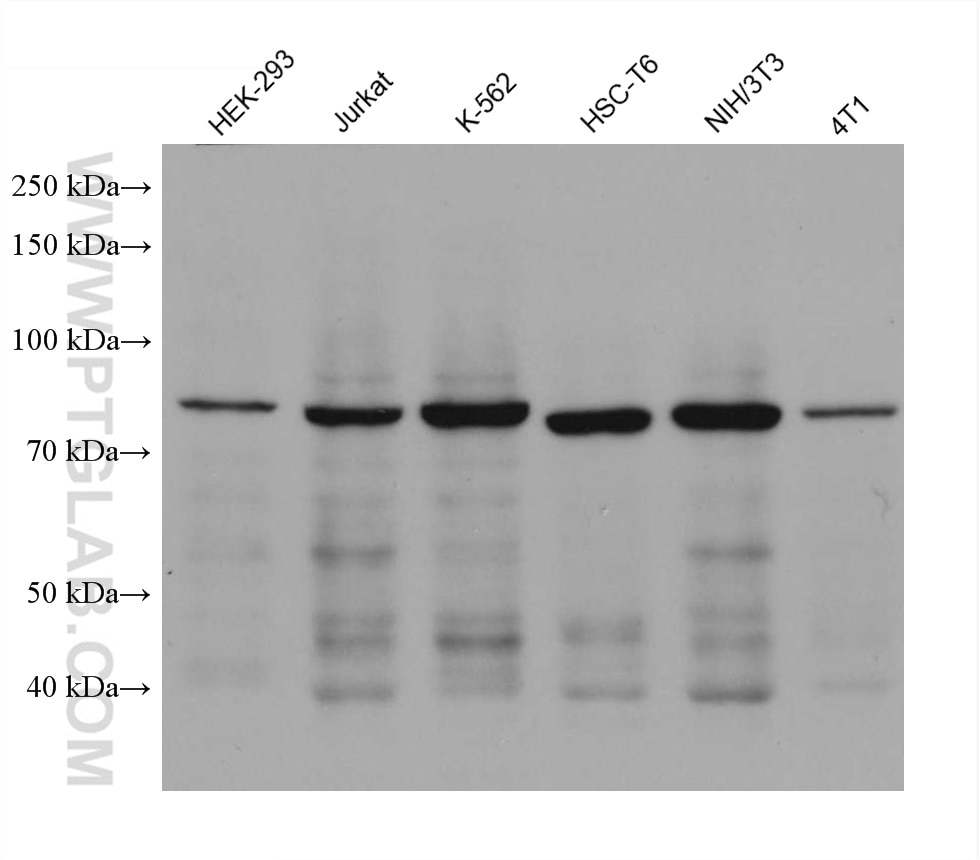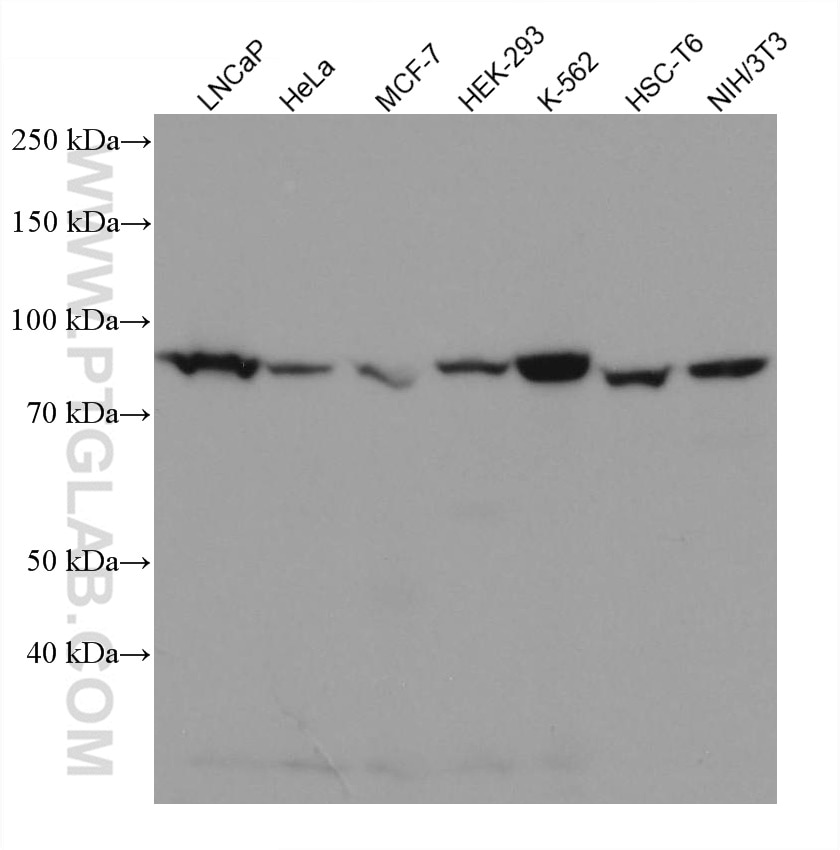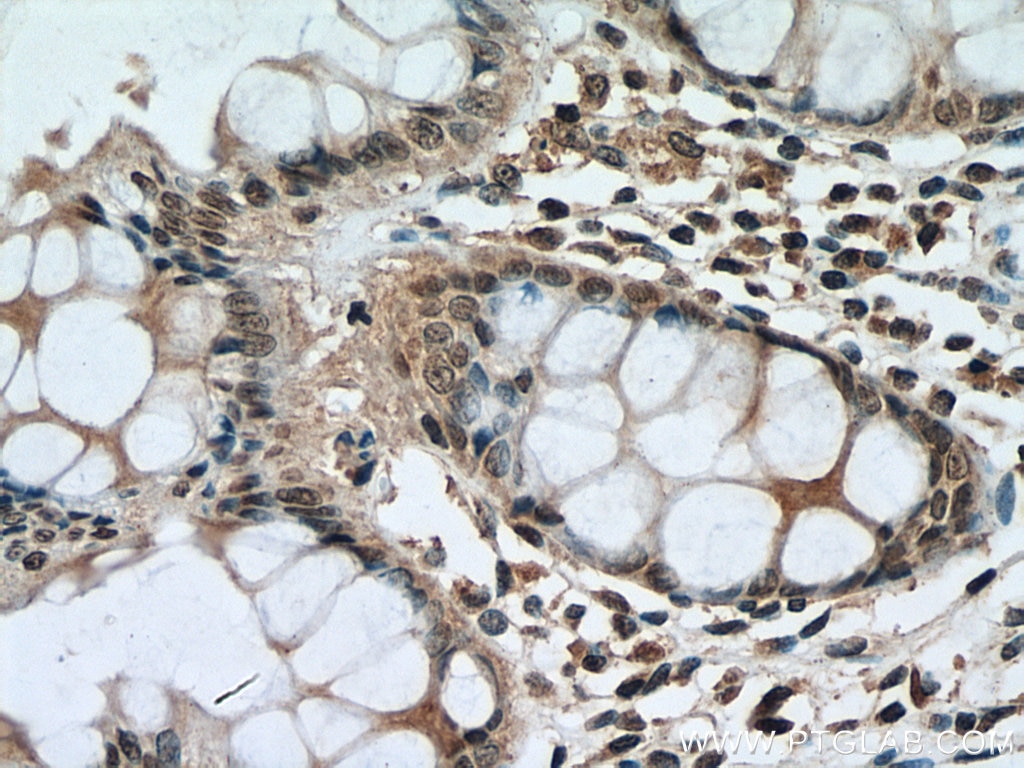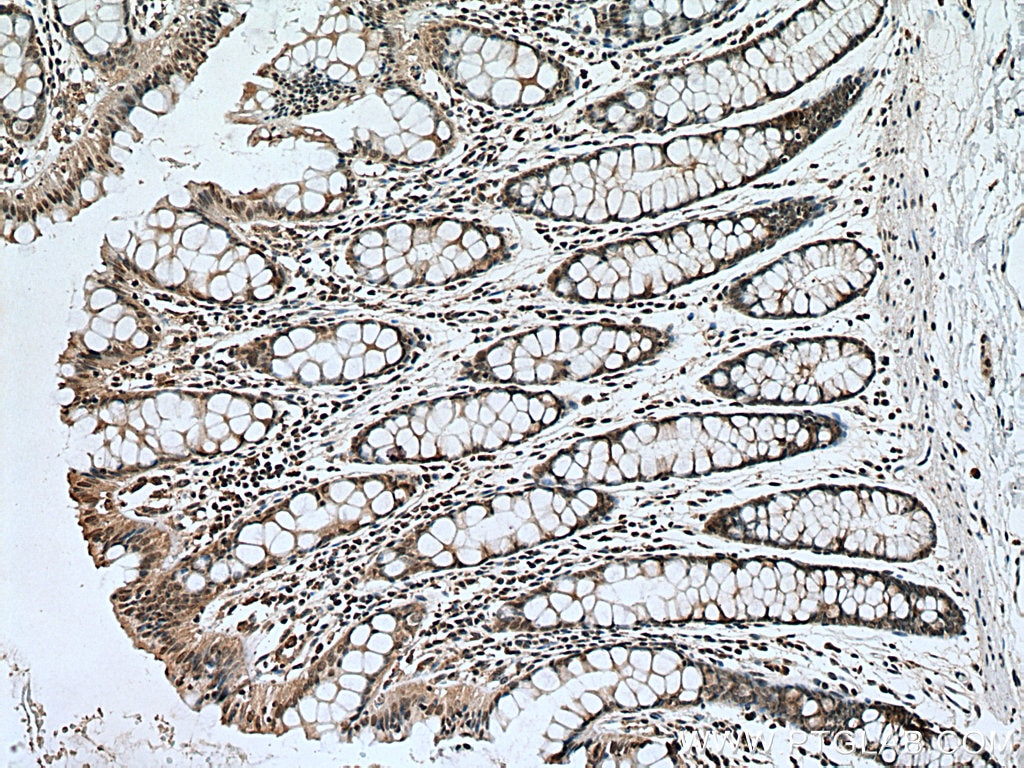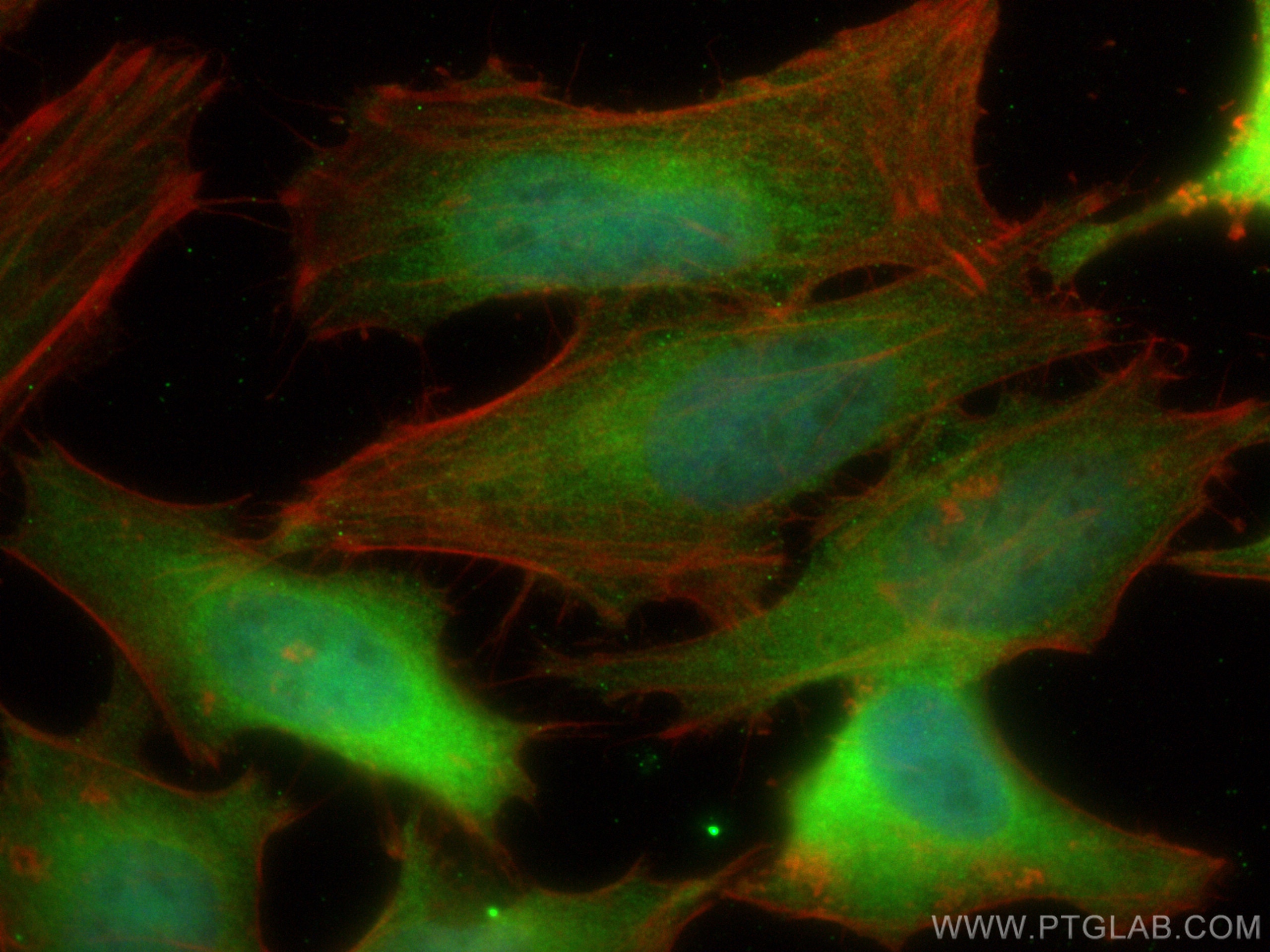Validation Data Gallery
Tested Applications
| Positive WB detected in | HEK-293 cells, LNCaP cells, HeLa cells, MCF-7 cells, K-562 cells, HSC-T6 cells, NIH/3T3 cells, 4T1 cells, Jurkat cells |
| Positive IHC detected in | human colon tissue Note: suggested antigen retrieval with TE buffer pH 9.0; (*) Alternatively, antigen retrieval may be performed with citrate buffer pH 6.0 |
| Positive IF/ICC detected in | HeLa cells |
Recommended dilution
| Application | Dilution |
|---|---|
| Western Blot (WB) | WB : 1:5000-1:50000 |
| Immunohistochemistry (IHC) | IHC : 1:200-1:800 |
| Immunofluorescence (IF)/ICC | IF/ICC : 1:400-1:1600 |
| It is recommended that this reagent should be titrated in each testing system to obtain optimal results. | |
| Sample-dependent, Check data in validation data gallery. | |
Published Applications
| WB | See 5 publications below |
| IHC | See 2 publications below |
| IF | See 1 publications below |
Product Information
67644-1-Ig targets PI3 Kinase p85 Beta in WB, IHC, IF/ICC, ELISA applications and shows reactivity with Human, Mouse, Rat samples.
| Tested Reactivity | Human, Mouse, Rat |
| Cited Reactivity | human, mouse, rat |
| Host / Isotype | Mouse / IgG2b |
| Class | Monoclonal |
| Type | Antibody |
| Immunogen | PI3 Kinase p85 Beta fusion protein Ag14369 相同性解析による交差性が予測される生物種 |
| Full Name | phosphoinositide-3-kinase, regulatory subunit 2 (beta) |
| Calculated molecular weight | 728 aa, 82 kDa |
| Observed molecular weight | 85 kDa |
| GenBank accession number | BC014170 |
| Gene Symbol | PI3 Kinase p85 Beta |
| Gene ID (NCBI) | 5296 |
| RRID | AB_2882844 |
| Conjugate | Unconjugated |
| Form | Liquid |
| Purification Method | Protein A purification |
| UNIPROT ID | O00459 |
| Storage Buffer | PBS with 0.02% sodium azide and 50% glycerol , pH 7.3 |
| Storage Conditions | Store at -20°C. Stable for one year after shipment. Aliquoting is unnecessary for -20oC storage. |
Background Information
PI3 Kinase p85 is also named as PIK3R2 and belongs to the PI3K p85 subunit family. PI3 Kinase p85 is a regulatory subunit of phosphoinositide-3-kinase (PI3K) which is a kinase that phosphorylates phosphatidylinositol 4,5-bisphosphate to generate PIP3. PI3 Kinase p85 binds to activated (phosphorylated) protein-tyrosine kinases through its SH2 domain, and then acts as an adapter to mediate the association of the p110 catalytic unit to the plasma membrane. It promotes nuclear translocation of XBP1 isoform 2 in a ER stress or insulin-dependent manner during metabolic overloading in the liver and hence plays a role in glucose tolerance improvement (PMID:23604317).
Protocols
| Product Specific Protocols | |
|---|---|
| WB protocol for PI3 Kinase p85 Beta antibody 67644-1-Ig | Download protocol |
| IHC protocol for PI3 Kinase p85 Beta antibody 67644-1-Ig | Download protocol |
| IF protocol for PI3 Kinase p85 Beta antibody 67644-1-Ig | Download protocol |
| Standard Protocols | |
|---|---|
| Click here to view our Standard Protocols |
Publications
| Species | Application | Title |
|---|---|---|
PLoS One Distinctive genes and signaling pathways associated with type 2 diabetes-related periodontitis: Preliminary study | ||
J Ethnopharmacol Longdan Xiegan Tang attenuates liver injury and hepatic insulin resistance by regulating the angiotensin-converting enzyme 2/Ang (1-7)/Mas axis-mediated anti-inflammatory pathway in rats. | ||
Clin Transl Oncol Anoikis patterns via machine learning strategy and experimental verification exhibit distinct prognostic and immune landscapes in melanoma | ||
Environ Toxicol Triclosan regulates the Nrf2/HO-1 pathway through the PI3K/Akt/JNK signaling cascade to induce oxidative damage in neurons. | ||
Exp Ther Med Anti‑epileptic mechanism of isopimaric acid from Platycladi cacumen based on network pharmacology, molecular docking and biological validation |
